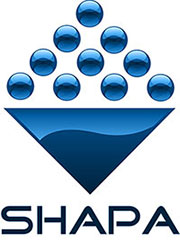Getting the Mix Right
The terminology ‘mixing’ and ‘blending’ is often grouped together as
the same process, technically they are slightly different. The process
of blending is the homogenous distribution of differing materials and is
usually a relatively gentle process. This involves, either solid-solid
mixing or the mixing of bulk solids with small quantities of liquid.
Whereas mixing is usually a more aggressive process involving the
combining of materials through the beating or stirring of the contents
within a static vessel. Agglomerators can be included under the
description of mixing and blending as the agglomeration process involves
the creation of granules from powders through the addition of liquids.
In certain circumstances some mixers can also operate as agglomerators
and dryers as well.
In an industrial setting blending, often takes place in Double
Cone and Vee blenders that gently tumble their contents over and over.
Rotating Drum blenders, fountain blenders and low speed ribbon and
paddle mixers can also be used for blending too.
Mixing can be achieved by using high speed rotating ribbon
blades, ploughshare blades or orbiting vertical screws. ‘No-dead pocket’
valves with contoured outlets are essential when the entire contents
must be fully mixed, otherwise there is a possibility that some unmixed
material will discharge from the mixer each time it is unloaded leading
to quality control issues. Blenders that tumble do not suffer this
characteristic as the mixture is all funnelled to the outlet. Ribbon
mixers, paddle mixers and blenders also can have the ability to mix the
ingredients gently so that they do not damage delicate products.
Ploughshare mixers, on the other hand, are ideal for mixtures that need
to be beaten together or where colourings or other coatings need to be
smeared over the entire surface of other materials. Both mixers and
blenders can accommodate the addition of liquids to form pastes or
slurries and both can be jacketed for heating or cooling their contents
during the process.
Mixing in static vessels can either be batch based or used on a
continuous process, whereas tumbling blenders are purely batch machines.
Mixers and blenders can have heated jackets or have warmed, dried air
passing through them so that they become dryers or reactor vessels. It
is the aim of all mixer and blender manufacturers to achieve a
homogenous mix in the shortest possible time and then to discharge it
without any segregation during the process. Such aims have resulted in a
multiplicity of variations on traditional mixer and blender types plus a
host of inventive, proprietary mixer and blender designs.
Besides
machines that are dedicated to mixing, there are storage silos that mix
materials: these are called Live Bins or Fountain Blenders. They use
screws, spirals internal baffles and air to continuously recirculate
material during storage. Agglomerators fluidise powders so that they can
be wetted and combined to form larger particles or granules. The
controls associated with the powder flow, fluidisation and liquid
injection offer the options of varying particle size, shape and density
according to requirements
Allied to mixing and blending are sieves, screens, separators,
sifters and shakers, as well as classifiers which reverse the process of
mixing and are used to separate products either in size, weight,
material type etc and can be used for all materials. Such equipment may
be used for QA sampling or production in batches or continuous
processes. Because of the very broad applications spectrum, the science
of particle separation and classification requires very specialised
knowledge of the product characteristics as well as the entire process.
Robust screens to progressively separate quarried minerals, for example
from coarse aggregates to fines, obviously require a very different
approach to the sieving of delicate pharmaceutical materials. Again,
difficult materials may adhere or agglomerate requiring techniques such
as ultrasonics to enable successful sieving and accurate size
classification. Diverse products such as zinc, powder coatings, gypsum
or rice meal need expert treatment.
As can be seen there are many differing processes under the
global heading of mixing and blending, sieving this is where SHAPA can
help, with its members many years of expertise through operating and
providing solutions for mixing and blending and sieving processes you
can be assured that SHAPA members have the right solution for your
process. A quick visit to the Equipment Finder section on the SHAPA
website www.shapa.co.uk will guide you through the different choices
ensuring you have the right solution for your process needs.
For
more information and assistance with all your solids and bulk handling
requirements, visit the SHAPA website at www.shapa.co.uk or email your
requirements to info@shapa.co.uk where our members will be happy to
help.
Visit www.shapa.co.uk or
email info@shapa.co.uk to
discover more benefits of membership or to find technical partners for
your next project.





















